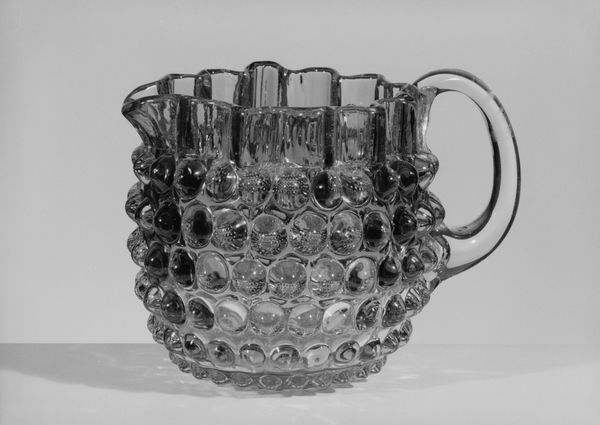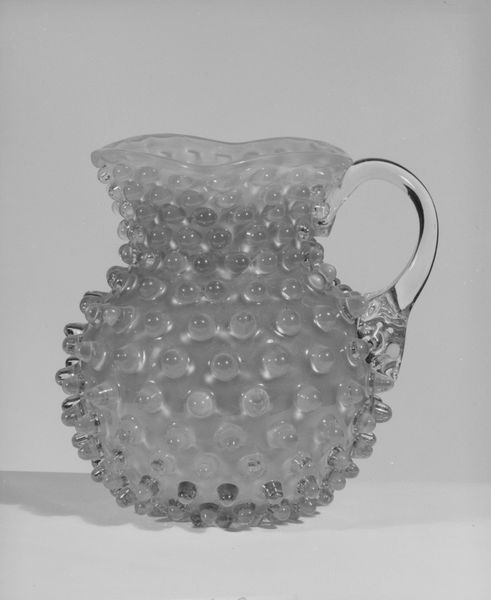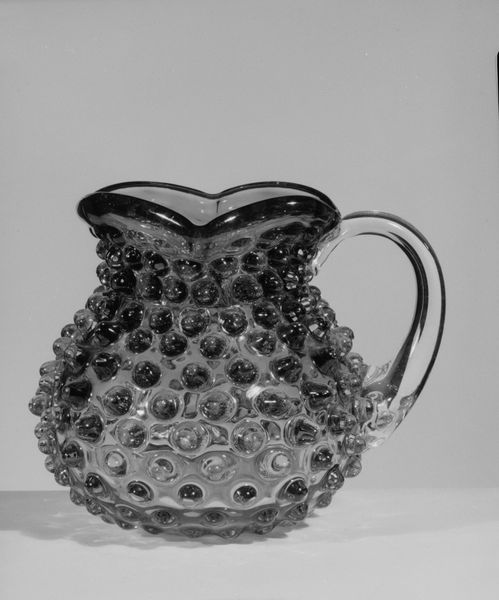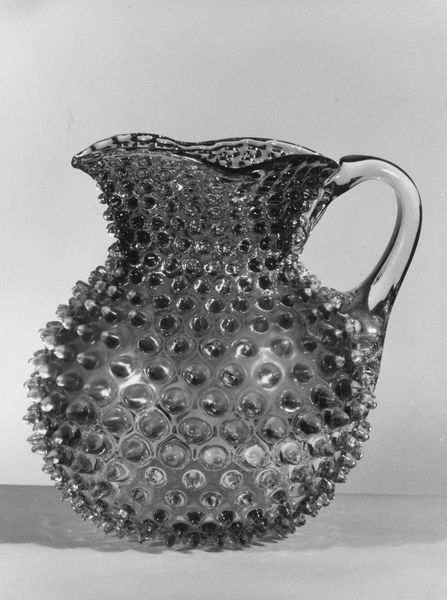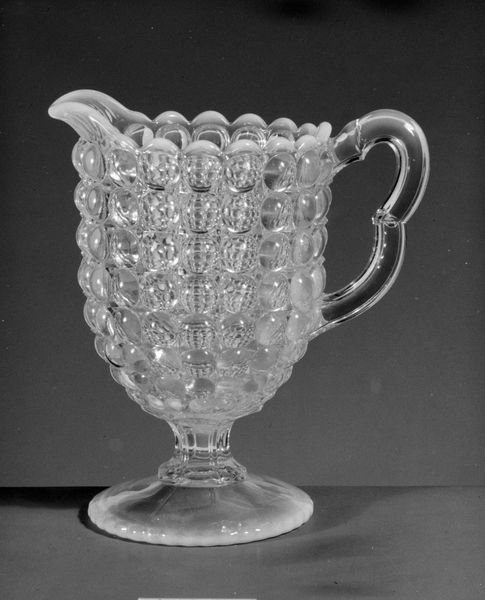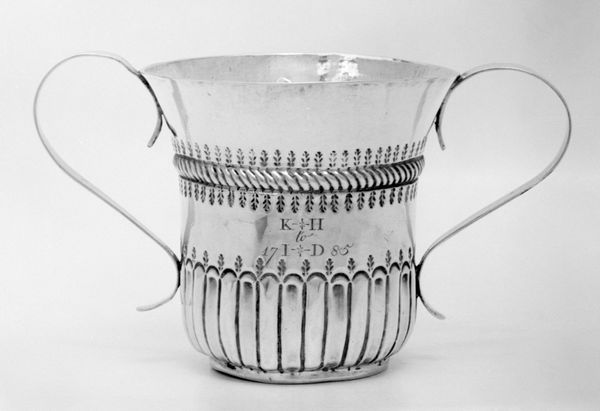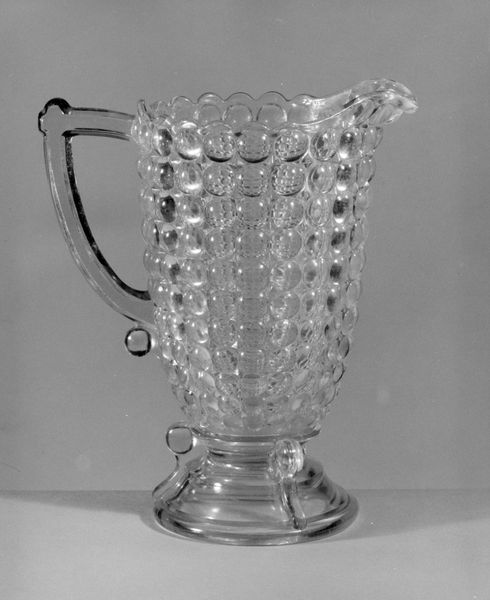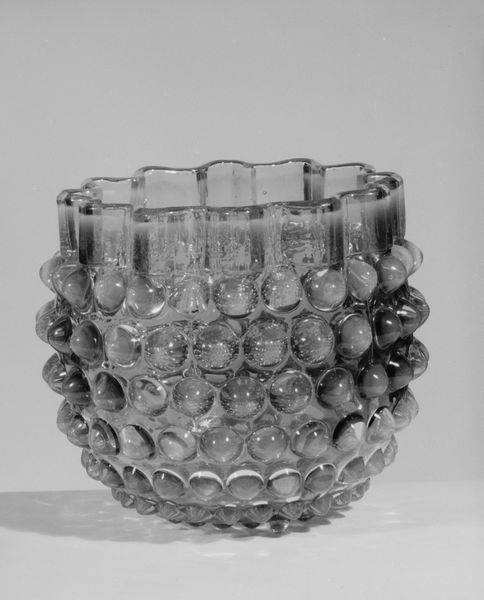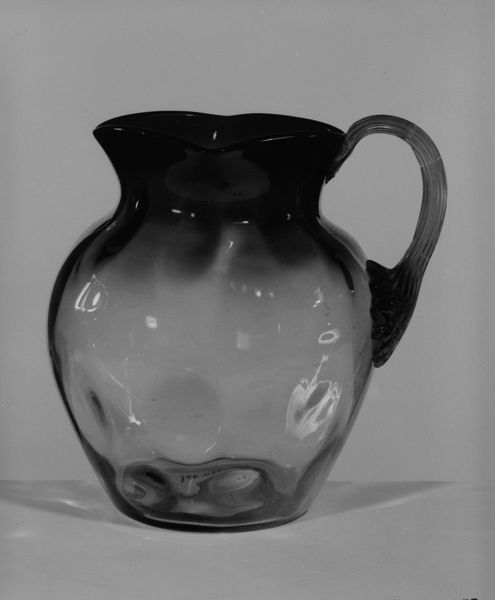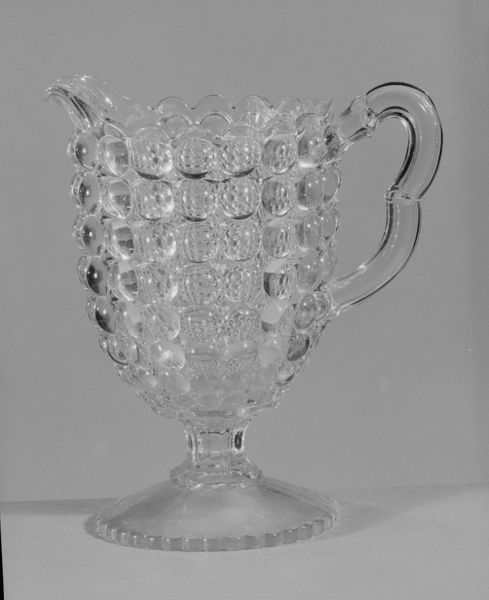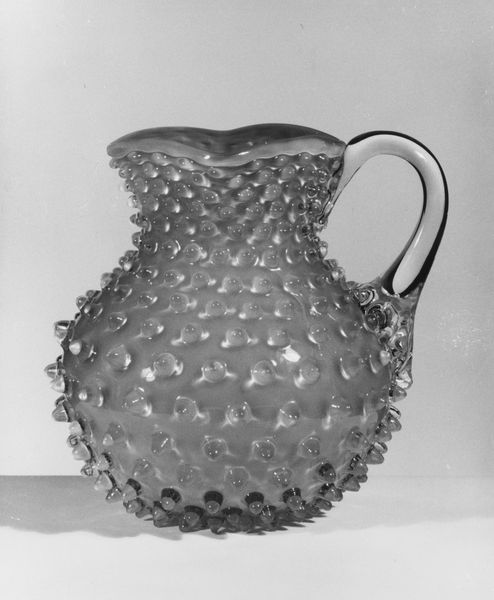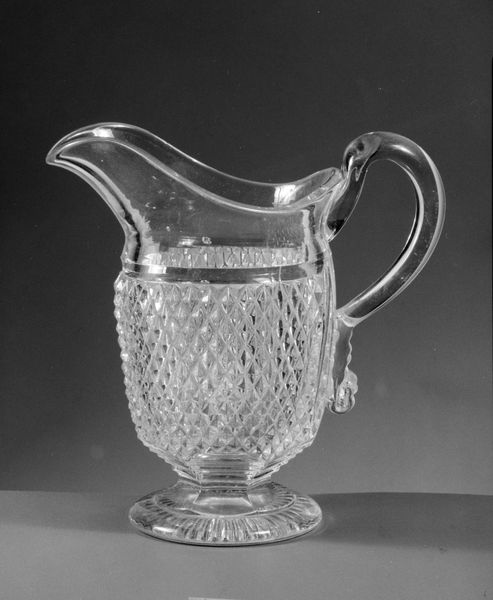
photography, glass, sculpture
#
photography
#
glass
#
sculpture
#
united-states
#
decorative-art
Dimensions: H. 4 1/16 in. (10.3 cm)
Copyright: Public Domain
Editor: Here we have the "Hobnail Pitcher" made between 1887 and 1896 by Hobbs, Brockunier and Company. It's made of glass and the surface texture looks quite tactile and bulbous. How do you interpret this kind of decorative art? Curator: The “Hobnail Pitcher” brings up interesting questions about production and consumption in the late 19th century. Consider this: mass-produced glassware became accessible to a wider segment of society than ever before, fundamentally altering relationships to class, taste and artistry. Do you think it democratized or diluted design? Editor: I see what you mean. On the one hand, decorative items were no longer just for the wealthy, but, on the other hand, mass production can sometimes sacrifice craftsmanship. It becomes a complicated thing to evaluate. Curator: Exactly. These objects circulated within complex social systems. Who were the workers crafting these pieces, and under what conditions? What meanings did different consumer groups attach to these types of objects in their homes? Understanding the industrial labor that creates beauty reframes our appreciation. How might feminist art theory inform your reading of an object so linked to domestic space? Editor: Well, thinking about gender, I'm reminded that decorative arts, historically, have been marginalized as "feminine" or "lesser" art forms. And, also, how women's labor was crucial in maintaining the domestic sphere where items like these would be used and displayed. Curator: Precisely. Now think about this piece in relationship to studio glass movements later in the 20th century and question its relationship to design and the domestic sphere. This is not merely a pitcher. It’s a cultural artifact brimming with questions. Editor: I see how everyday objects can be valuable historical resources for revealing insights about broader societal values and historical power dynamics! Curator: Yes. By exploring those dynamics, we recognize these pieces, and art itself, are very much a part of us and society, both past and present.
Comments
No comments
Be the first to comment and join the conversation on the ultimate creative platform.
